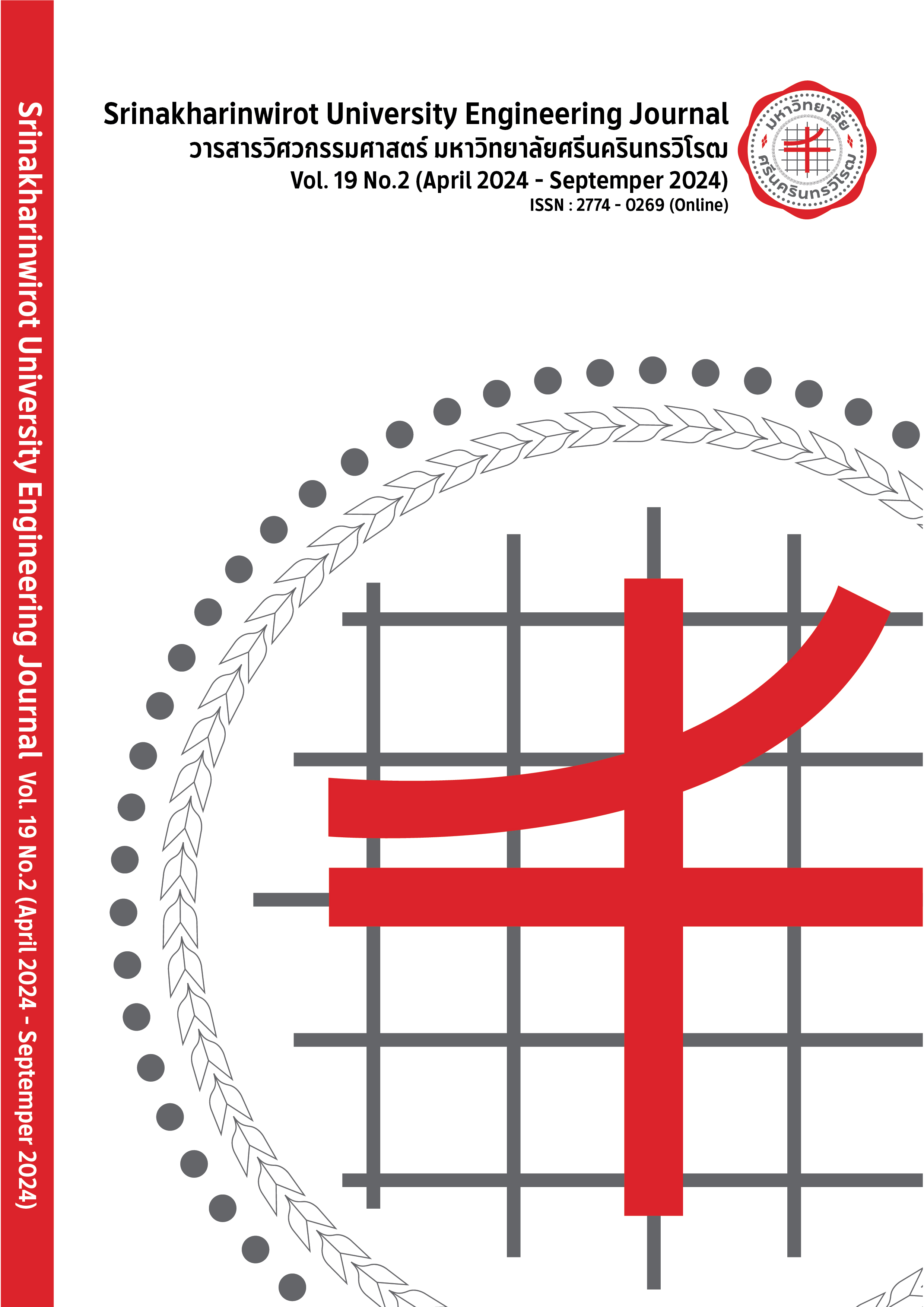Production Potential of RDF -5 Fuel from Municipal Solid Waste Mixed with Natural Rubber in Satun Global Geopark
Main Article Content
Abstract
Satun Province is a small province with world-famous tourist attractions such as Koh Lipe. The number of tourists is about 1.04 million people/year. On April 17, 2018, it was certified as Thailand's first global geopark. Almost all of the waste in the World Geopark area is disposed of at the Integrated Waste Management Center, Kamphaeng Subdistrict, La-Ngu District, Satun Province. Currently, there are more than 100,000 tons of residual waste from the community in the center. This research investigated the optimal ratio of community waste to rubber for the production of RDF-5 fuel. The ratio of community waste to natural rubber was studied at the ratio of 100:0, 95:5, 90:10, 75:25, and 50:50, respectively. The results showed that the calorific value was increased in the ratio (%) of the added natural rubber (concentrated latex) and the heat value of the fuel is directly in ratio to the amount of natural rubber added. The ratio with the highest calorific value was 50:50, followed by 75:25 and 95:5. The calorific value was 41.63 MJ/kg, 41.54 MJ/kg, and 40.75 MJ/kg, respectively. Compared with 100:0 have a calorific value of 40.69 MJ/kg only. Adding natural rubber to RDF-5 fuels will increase the ignition time of the produced RDF-5 fuels and produce higher calorific values and cover the standards required by the industry, which had a synergism significantly.
Article Details

This work is licensed under a Creative Commons Attribution-NonCommercial-NoDerivatives 4.0 International License.
Copyright belongs to Srinakharinwirot University Engineering Journal
References
Satun Provincial Statistical Office, “Satun Provincial Statistical Report 2019”, 2019.
Satun Provincial Natural Resources and Environment Office, “Satun Provincial Development Plan”, 2019.
N. Jidapal, “Potential of refuse-derived production from Bangkok municipal solid waste,” M.S. Thesis, Department of Environmental Engineering and Management, Chulalongkorn University, Bangkok, Thailand, 2007.
K. Thanongkiat, “Demonstration of the conversion of waste in the university to energy in the form of heat. Faculty of Engineering,” Chiang Mai University, Chiang Mai, 2011.
J. Jindaporn and L. Chaloenporn, “Properties of Densified-Refuse Derived Fuel Using Glycerin as a Binder”, Energy procedia, vol. 100, pp. 505-510, 2015.
W. Punin, S. Maneewan and C. Punlek, “The feasibility of converting solid waste into refuse-derived fuel 5via mechanical biological treatment process”. J. mater cycles waste manage, vol.16, no. 4, 2013.
M. Ioelovich, “Energy Potential of Natural, Synthetic Polymers and Waste Materials - A Review”, Academic Journal of Polymer Science, vol. 1, no. 1, pp. 9-23, 2018.
S. Chitlada, “Natural rubber technology: New knowledge about natural rubber from molecular structure to industrial applications = Natural rubber technology,” Bangkok: Technobiz Communications, 2010.
F. D. Maria and Gregorio, “RDF to energy plant for a central Italian region SUW management system: Energetic and economical analysis”, Journal of Thermal engineering, vol. 26, pp. 1291-1300, 2006.
D. Nattawut, “Research report on the demonstration of waste conversion in universities to heat energy,” Bangkok: National Research Office, 2011.
Pollution Control Department, “Thailand Pollution Situation Report 2011,” Ministry of Natural Resources and Environment, 2011.
Pollution Control Department, “Announcement of the Ministry of Natural Resources and Environment on the determination of air pollution control standards from new power plants”, 2010.


